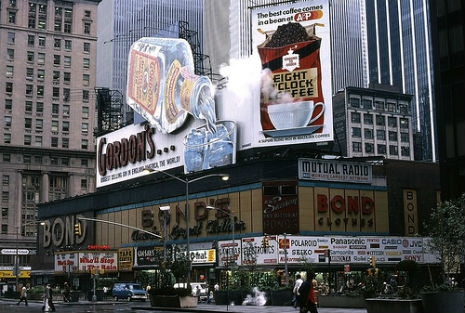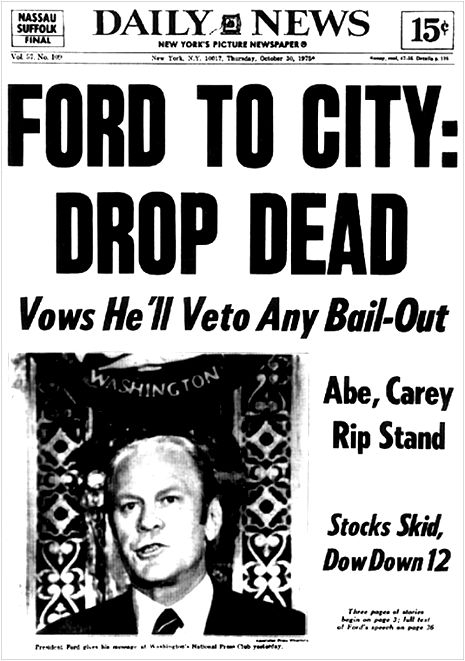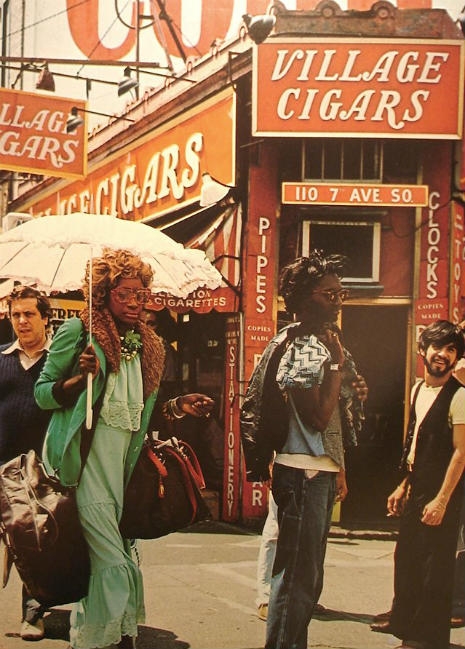
While much of what we see in this bittersweet time capsule still stands, there are scenes of a once vital part of New York City that has vanished. I refer to the footage of the Garment District. Hard to believe that only a few decades ago Manhattan was one of the fashion production capitols of the world. Clothing was actually being made in giant lofts not far from Times Square. It was an amazing scene of streets cluttered with migrant workers pushing rolling racks hung with freshly-made dresses that swayed seductively as they passed pastrami-scented delis jammed with kibitzing garmentos. Sidewalks teemed with Hasidic men in funereal three-piece suits and black hats made of rabbit fur while high above in the cathedrals of fashion sewing machines chugged metallically. Jazzily. Music of the shears.They call them Singers for a reason.
It’s all gone now. A whole American industry and culture disappeared like dinosaurs in the tar pits of progress. A song no longer sung.
I bought many fine sharkskin suits from factories in the Garment Center in the late Seventies. My favorite one by far had super narrow lapels, 13 inch pegs and was lime green with silk paisley lining. Years later, I ripped that suit to shreds on the stage of The Ritz during a set with my band. I was drunk and I regret having destroyed that lovely piece of American craftsmanship - handmade by some old cat with a sewing machine in a darkened loft surrounded by hundreds of yards of shimmering silk.
I turned my obsession with vintage threads into a business. I spent my days in the Garment District going through warehouses of unsold merchandise or digging through the stockrooms of stores like Bond’s (which later became a music venue where The Clash would have their famous seventeen day residency). I scored skinny ties at $15 a dozen and sold them to boutiques catering to punks and new wavers. I found factories that made women’s leather gloves, pop art handbags, plastic costume jewelry in neon colors and day-glow fishnet stockings. I bought em all, blew off the dust, and made bucks from clients like Trash And Vaudeville and Patricia Field. Before I knew it, I had a 2000 square foot space in the farther reaches of the West Village packed with low couture grooviness. I was getting visits from the owners of stores in London and Paris. They wanted American style made in America. The sleek pimped-out suits, cockroach killers with Cuban heels and white Naugahyde go-go boots made in the Bronx, Queens or Manhattan were far hipper than the shit strolling down the runways of Europe.
Believe it or not, there were hundreds of these small factories and wholesalers in NYC. On 39th street I found an ancient showroom/warehouse stocked with hundreds of dozens of wraparound sunglasses - the kind Marcello Mastroianni wore in 8 1/2. They ended up on the shelves of some of the most expensive stores on Madison Avenue. That score alone covered my rent on East 27th street for an entire year. I was a high school dropout turned instant fashion mogul.
The fruit of American labor didn’t stop on Fashion Avenue. Downtown there were huge storefronts filled with close-out merchandise. On Chambers Street I discovered more than a thousand pairs of patent leather fuck-me pumps made by a company called Sapphire and bought every trashy one of them for a buck a pair. Most of those candy-colored high heels ended up in Fiorucci along with a few hundred paper dresses with op-art prints I found at a junk seller near Wall Street. Manhattan was crazy mad with this kind of stuff back then and it was usually pretty cheap.
It was possible to dress cool for next to nothing in clothing made right where we lived. We were the fashion equivalent of locavores. You could dress sharp on the proceeds of an unemployment check and still have enough cash to pay the landlord, buy some blow and get drunk at the Mudd Club. But more importantly, fashion could identify who you were in the same way as a uniform tells people what branch of the military you’re in. Yeah, we wanted to look cool but we also wanted to make a statement. In that respect, fashion could be political. It could shake up the status quo. Outside of New York, L.A. or London, dressing in a certain way could come at a price. A sharp-dressed man or woman could stir up some shit in the hinterlands. It could actually be dangerous.
I got into fashion not for the money. Money was a by-product of doing something I dug. I got into it because I wanted to outfit the future rockers of America with gear that would align them with a musical movement that, at the time, was shaking shit up and was something I was passionate about. When I started getting orders for skinny ties and wraparound shades from stores in places like Wyoming and Nebraska I felt part of a revolution. I was selling to small stores in small towns where a kid wearing a skinny tie and spiked hair was taking a chance by expressing who he was on the inside by simply wearing a tie two inches less wide than what was considered acceptable. In 2013 when everyone including your mother has a tattoo, it’s hard to imagine that a tie or a pair of sunglasses could be seen as radical, but they were. For three bucks a kid in the middle of nowhere could buy a piece of gear that immediately set them apart from the pack. They could announce to the world that they were different while they took the time to figure out just what that meant. Even if it meant nothing more than loving The Ramones or DEVO.
Like love, rock will tear us apart… tear us apart from the humdrum realities of a life where chances are never taken. Fashion, in its purest form, is as clear an expression of intent or philosophy as a poem or song or painting. In 1966, at the age of 15, I pierced both of my ears and stuck two gold hoops in them, scrawled a peace sign on the back of my jean jacket and walked through a shopping mall in Virginia with my pet chicken on a leash. I had no idea what the fuck I was doing I just knew that I had to do it. Someone in that suburban hellhole had to. Sometimes your personal revolution starts with a fashion statement. Sometimes all it takes is a chicken on a dog leash and a pair of earrings.
And it’s still ongoing. I was in a Hot Topic in New Mexico not long ago and I saw a group of Hispanic kids buying Cure and Smiths tee-shirts and a few pairs of bondage pants. It was a big move for them. There are parts of Albuquerque where shit like that can still you get you fucked up. You saw Breaking Bad, right? But these young cats were making the leap out of themselves and declaring what they loved and what they wanted to stand for. I walked over to them, they were probably no older than 16, and simply said “cool” and that was enough to let them know that we were on the same team even though there were was more than a 40 year difference in our ages. I left it at that, though I was tempted to tell them my chicken story and that the people who made the bondage pants they were buying were my best friends and have made millions selling punk rock clothing to kids all across America since 1975. Purists will question the commodification of rebellion. To which I say “fuck that shit!” Punk has always been as much about fashion as it has music. Not every kid can be in a band but every kid can look like he’s in a band. And that’s a good fucking start.
Anyway, here’s some way cool footage of New City when it was funky, sexy and more than a little bit crazy. These were the days when New York City made more than just money. It made stuff you could hold in your hand, put on your body and tell your story through.
From the YouTube description:
This film of New York City streets, parks, and people was made in the early 1970s by amateur filmmaker Irving Schneider. Includes scenes of Brooklyn Heights, Washington Square and Greenwich Village, the Garment District, Times Square and 42nd Street, and Central Park. Music by John Coltrane.
Thanks to Jahn Xavier for turning me on to the video.







